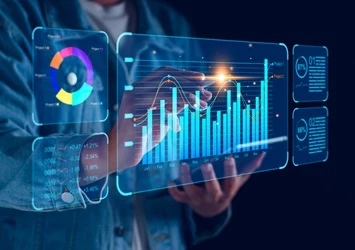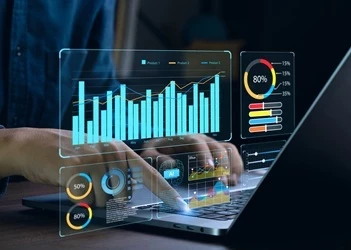An Express Guide to Predictive Analytics
Add bookmark
What is Predictive Analytics?
At its simplest, predictive analytics is the science of using historical data to predict future outcomes. Predictive analytics and automation go hand and hand. Without automation, we would not be able to synthesize and derive meaning from the massive amounts of data we collect. In fact, “big data” is a direct output of automation. On the other hand, data is the engine that drives intelligent automation, making it smarter, faster and more effective.
Though often used interchangeably, Machine learning (ML) and predictive analytics are not the same thing. ML applications simply automate the predictive analytics process.
What is Data Mining?
Data Mining is the process of finding hidden patterns within high volumes of data (in other words, big data). In predictive analytics, this information, known as datasets, is then used to forecast future outcomes. However, given that companies are collecting more data than ever before, the main challenge with data mining is ensuring data quality. Afterall, bad data in means bad data out. Therefore, effectively preparing, storing, organizing, and cleansing data is a critical component of data mining.
Though we’re only just beginning to tap into the power of big data, businesses are already leveraging data as a key competitive advantage in areas like fraud detection, social media marketing and demand planning.
What is….?
- Data classification: In order to be utilized, data has to be organized into a “data matrix,” or category within the system. Data matrices help cleanse data as they filter out anomalies + irrelevant data.
- Data modeling: is the process of transforming raw data into meaningful insights. Predictive modeling uses historical data to essential map out or simulate future behavior. Data clusters and decision trees are two common types of data models.
What are data clusters?
A data cluster is a machine learning algorithm that creates data models by grouping data into sets based on similarities. Unlike decision trees, they have no defined direction.
K-means clustering uses unsupervised ML techniques to group similar data points together based on similarities and uncover underlying patterns. The k-means algorithm starts by organizing data into randomly chosen categories. Ititeratively refines these calculations until the centroids have stabilized (there is no change in their values because the clustering has been successful) or the defined number of iterations has been achieved (nearest neighbor clustering).
Biologically inspired clustering groups data together based on what keeps each data point away from each other, what keeps a data point moving congruently with another, and which data points move together. As the name suggest, these algorithms are modeled after natural behavior such as the clustering and sorting behavior of ants or the foraging behavior of birds.
What are decision trees?
A decision tree is a directed, supervised and outcomes based learning model. Easier to comprehend (they look like flow charts) and less susceptible to outliers, decision trees essentially use historical data to map out potential outcomes. With classification trees, data points are already recognized and defined. New data can then be easily plugged in.
When you combine classification trees, you get an ensemble. These more complex supervised learning algorithms more effectively filter out outliers, protect against bias and, as a result, deliver superior predictive models.
In contrast to typical decision trees, a regression tree uses variables as inputs and numbers as outputs. For example, based on age, weight, and sex, a regression tree can predict mortality rates for patients with heart disease.
Business Intelligence (BI) & Predictive Analytics
Business Intelligence (BI) is an all-encompassing term referring both to the technological tools used in data analytics and ML business applications (i.e. dashboards, reports) as well as the strategies and best practices surrounding those capabilities. One could even say predictive analytics is a subset of BI. BI tools also help companies share data and data-driven insights across the enterprise, enabling collaboration and scalability.
What are Some Use Cases for Predictive Analytics?
Potential applications for predictive analytics are rapidly emerging. From healthcare, to retail to finance, there’s no industry that isn’t already utilizing or being impacted by predictive analytics. Furthermore, predictive analytics solutions are cheaper and easier to deploy than ever before.
For example, healthcare organizations, amongst many other things, are using predictive analytics to detect early signs of patient deterioration in the ICU as well as better forecast equipment maintenance and repairs. Retail and e-commerce organizations leverage predictive analytics to manage inventory and develop tailored marketing campaigns (think product suggestions and personalized ads). Predictive analytics has also been proven to be an invaluable tool in identifying and preventing cyber crime.
And this is just the tip of the iceberg. Though we’re only just beginning to see what predictive analytics are really capable of, it’s already becoming a staple technology for businesses and organizations across all sectors.






























